
It's quite the undertaking...
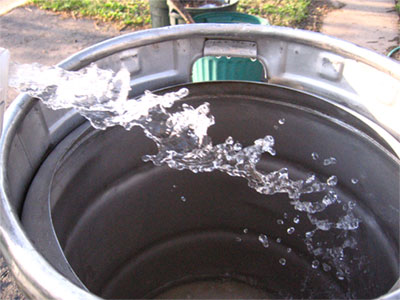
First thing, I'm moving the gear up to the head of the driveway. Since the driveway is still jacked from a botched home improvement project, I need the vast majority of the waste water to go into the gutter. It's not as convenient, but doable.
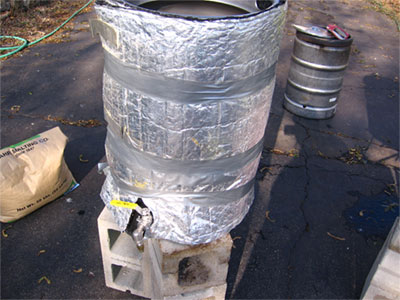
I'm glad of the demonstration brews I did at Bacchus & Barleycorn a few years back. Having to cart my shit across town, set up, brew, clean up and cart it all home helped me get a better rhythm with a brew session. I'm out of practice, but I to pick up Mo by 5:30 and I couldn't bring her home to all this scattered about.

I'll try to explain the pics as we go here. The insulation around the mash tun helps maintain temperature. I lose about 2ºF per hour with the wrap on.

My kettles, you'll notice, are as illegal as they are cheap. I guess if Anheuser Bush wants them back, I'll trade them for the $12 deposit I paid to get them. Then I'll go pay another $12 per at a liquor store and take some fresh kegs to a sheet metal shop. Between the custom cutting and fitting and the deposits, I got three 15 gallon stainless steel stock pots for about a third of what just one 15 gallon Polar Ware would cost me.

The cinder blocks are a drag to carry out and stack, but stacked cinder blocks are the cheapest and most flexible beer tree there is. Job security for my chiropractor. Plus, I can really feel it in my forearms as I type, all the gripping and lifting I've done today.

I'm really glad I kept elaborate and relatively thorough brew logs over the years. All sorts of details I used to have at the top of my head have faded in the five years since I last did this.
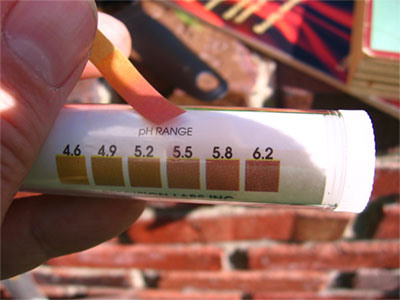
I have a pH meter, but it's been sitting dry for years and the battery is dead. I need to get a new batter for it and let it sit in storage solution for awhile, see if it can wake up. Luckily, I still had some strips for doing it the old fashioned way.

What mashing does is convert the starch in the malt to sugars, many of them fermentable. I won't go into the details of pH and temperature ranges that the enzymes responsible like, but the way you can test to see if it's soup yet is with iodine. You already have iodine around (Iodophor), probably, because if you use any stainless steel on the cold side, you have to have a way to sanitize it. You can get away with bleach solutions for glass and plastic, but bleach eats stainless like Buffy slays vampires.
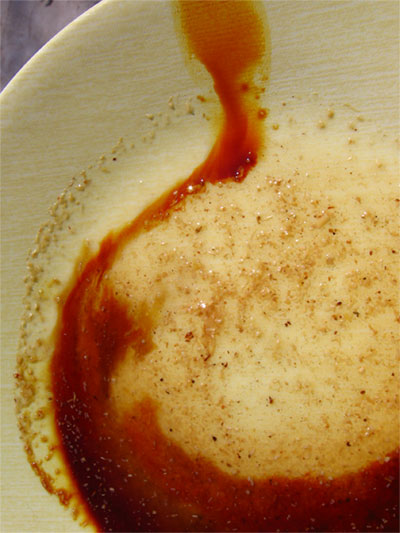
So the iodine turns purple if there's starch. If it stays brown, you have sacchrification and can commence to sparge.

Sparging is rinsing the sugary wort from the grain husks. Wort is the stuff that will be beer once it's fermented.
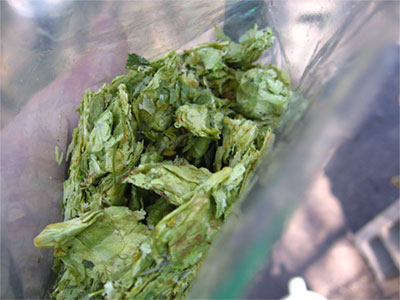
Okay, at the last minute, I changed my mind about hopping on this one, used the Fuggle and East Kent Goldings as bittering hops. I'll save the Warrior plugs for the next brew. I decided to stick more to the Old Ale style.
Hops, if you're wondering, are these marvelous green, leafy flowers. They give beer it's bitterness, without which it would be cloyingly sweet, but more significantly they keep it from spoiling. Mad antibacterial properties, for real.
For that matter, I changed my mind a couple of times about how much to bitter it. In the process, I started to try and recall the formulas for calculating IBUs (International Bittering Units). Then I thought to Google this, and lo, there are tons of great free calculators for us beer nerds.
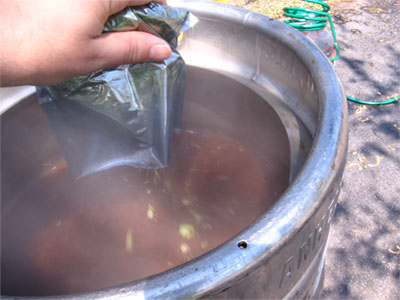
I even found one, Rooftop Brew, that gives both Jackie Rager and Glenn Tinseth formulas. I tend to favor Rager, but maybe that's because he's a friend.
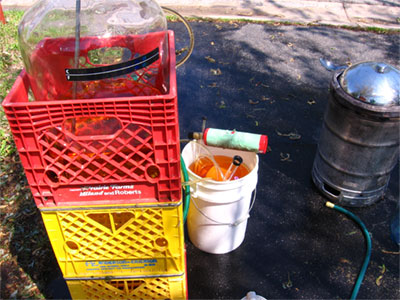
You know that old saying about the watched pot that never boils? Well, there's a corollary for the pot you turn your back on. I was almost done with the boil and had briefly marveled that I hadn't had a boil over in the whole 90 minutes. One of the nice thing about outdoor brewing, a boil over isn't a catastrophic housecleaning project. Still, I've never really believed in sacrificing the first bit to the gods. Screw the gods, if they want a beer they can come over and be neighborly.
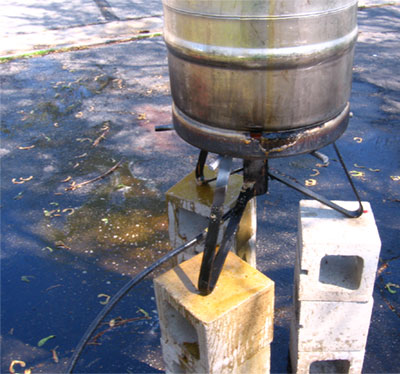
Gusty days are particularly tricky, because a strong wind will cool the pot so much the boil dies. So you crank the flame and then the wind dies down and you boil over. Today wasn't gusty, it was flat out windy. Like brewing on the deck of a sailboat, no kidding.
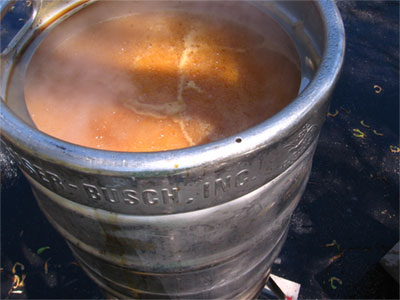
Then, I'd noticed in the home stretch the boil was looking a little puny. The propane in the tank super cools as it expands, and as the tank gets low, the flow is inhibited by the freezing. Rocking the tank will help free things up, so that's what I did. Then I went to attend to sanitizing a carboy and bammo, the wind died down and the re-intensified flame had its way and I'll bet I lost a half gallon of wort to the boil over.
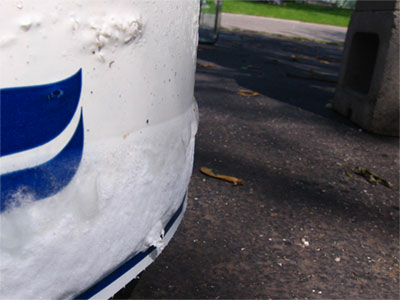
I don't know if you'd see ice build up on the propane tank like this running a grill. The King Kooker I use is rated at 100,000 BTUs, and as windy as it was today I ran it full blast quite a bit. It sounds like a jet airplane getting ready to leave my driveway...awesome, I know.

When the boil is over, it's time to chill the wort (pronounced 'wert' by the way). A copper scrubby on the end of the stainless racking cane will help filter out the hops. I use a new scrubby each batch; when I'm done, it's great for scrubbing kettles. And there is scrubbing involved when you're done with this.
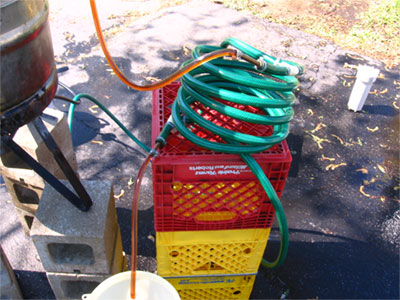
My wort chiller is a counterflow. The other type is an immersion chiller, which runs coled water through a copper coil you drop in the vat of wort. A counterflow chiller runs the hot wort through the copper, and surrounds the copper with garden hose so cold water can flow the opposite direction. In science class, they call this a counterflow heat exchanger. With a pressure cooker and a fitting to hook it to the pressure cooker, it'd be a still.
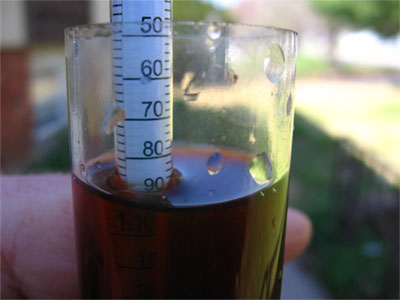
No, I don't fool around with distillation. Making beer is a perfectly legal hobby, making spirits is, legally speaking, on a par with a car trunk meth lab. It shouldn't be, but there it is.
So anyway, I mentioned how I'm kind of out of practice? Well, I should have sparged more runoff than I did. I started with 11 gallons, thinking I'd be fine because there's not that much in the way of hops here. Three ounces total. I've made beers where the hops probably soaked up two gallons of wort that never grew up to go to college.

I forgot how much evaporation I get in a 90 minute boil. If I had more diligently consulted the aforementioned brewing logs, I'd see that I've started out with 13 and 14 gallons to get down to 10 or 11 even with beers that use smallish amounts of hops.
So I ended up with like eight gallons instead of ten.
Then I did something stupid, which was I tried to consolidate them into one primary fermenter. They almost fit, but no dice. An acid carboy is about 7-1/2 gallons filled to the neck, but I was over that by a half gallon with the starter (another half gallon) not included.

So then I tried to pour back, but the outside of the fuller carboy had gotten wet with foamy wort running down its sides and I almost lost my grip on the booger. Which would have meant losing 7 gallons of hard-earned wort, a $15 carboy and it also might have cut the shit out of me.
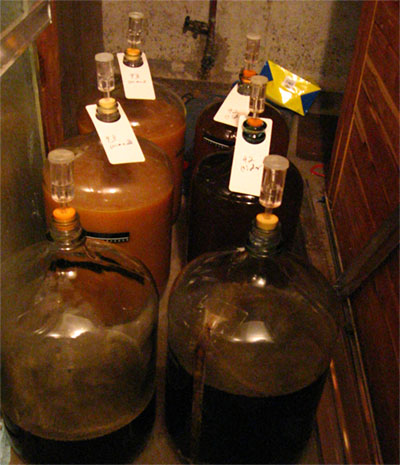
So here we have the homebrewer's equivalent of six-pack.
And yubba, looking at the initial gravity, I definitely should have sparged longer. Instead of the 1.065 I was shooting for, I got an OG of 1.086. No, if you don't brew,that makes no sense. When it's finished fermenting the beer will be maltier and have substantially more alcohol than I had targeted. Still within the style.

No comments:
Post a Comment